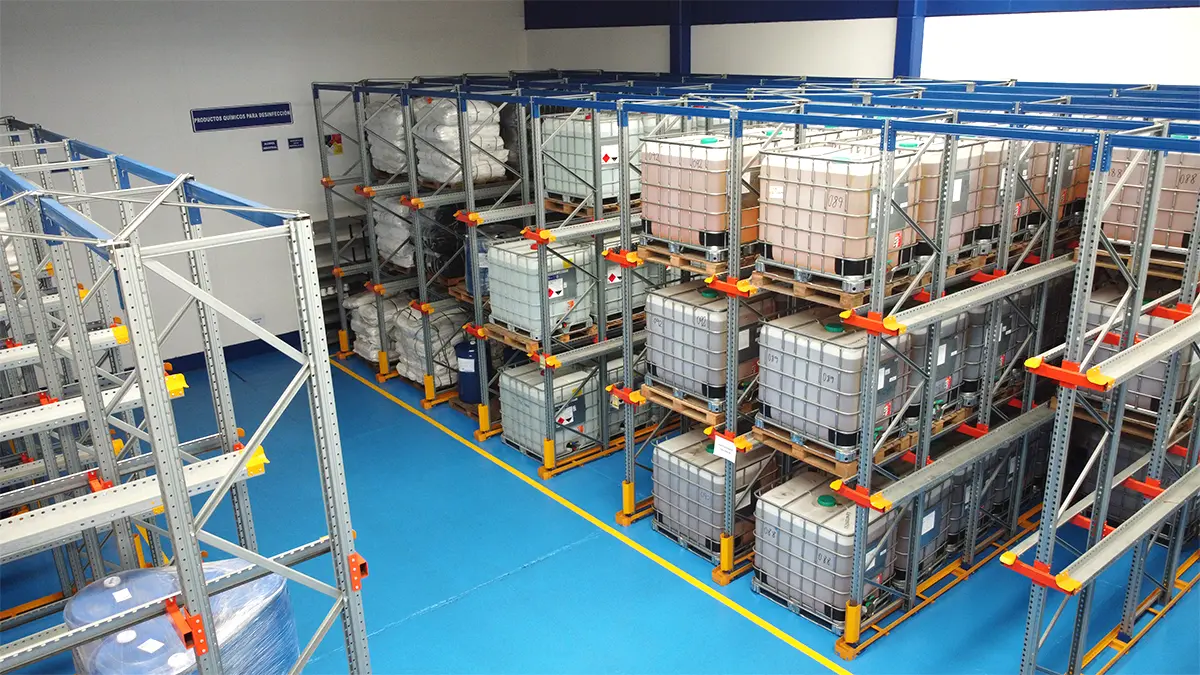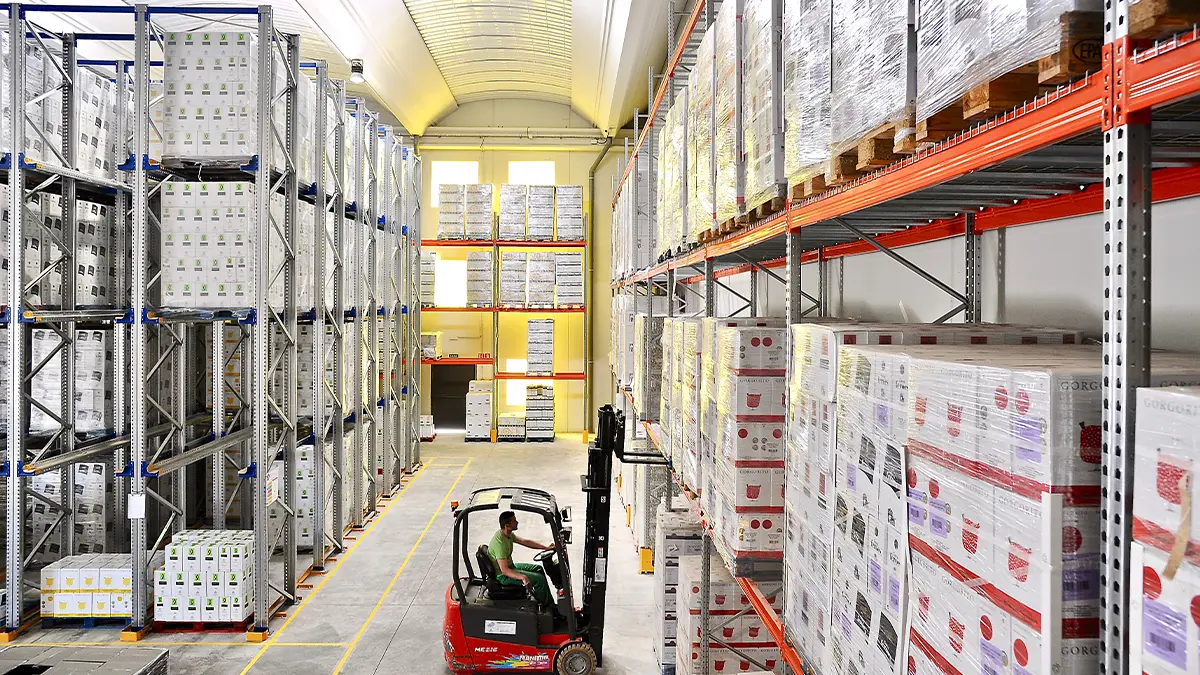The ABC inventory classification method is a system for segmenting and organising warehouse products based on their importance, relevance to the company, economic value, benefits, rotation generated, etc.
The aim of ABC classification is to prioritise the most important goods for a company in the warehouse, such as those products that most impact the company’s profits and those with the highest rotation, instead of treating all the references the same or organising them by their size, weight or quantity.
Origin and explanation of ABC stock analysis
The origin of the ABC stock management method comes from the so-called 80/20 rule or Pareto Principle, which asserts that 80% of outcomes (or outputs) result from 20% of all causes (or inputs) for any given event. Applying the 80/20 rule to the reality of a company, 20% of the total references would generate 80% of the profits.
Extrapolating the Pareto Principle to logistics would mean that in a warehouse around 20% of product references generate 80% of movements in the warehouse and the company’s revenue, too. Based on this principle, different criteria can be followed to organise and prioritise this most important part of the goods according to each company’s characteristics.
The ABC classification method uses the Pareto Principle to segment the goods in a warehouse into 3 categories (A, B and C) based on their importance according to the criteria selected, and therefore allocate more resources to key references for the company, in this case those in group A.
Product categories in the ABC system
Since not all the products in a warehouse provide the same revenue and profitability, we should not allocate the same number of resources to all of them.
Below are the types of product references that must be included in each category, A, B and C.
Category A products
According to the ABC system, category A references are those of most importance to a company. They only make up around 20% of inventory but represent most of the usual movement in a warehouse, with higher rotation, and also account for around 80% of a company’s revenue.
Being the priority references category, the company must allocate more resources to it, to carry out, periodically and frequently, more exhaustive and complex stock controls.
Any inventory problem with category A products, such as stock shortage or depletion, will cause major losses for a company.
In the ABC model, category A products must be located in easy-to-access areas close to the dispatch area, to speed up the order preparation process. It is very important to consider this to define the warehouse layout and correctly organise all the stock.
Products in this category can be stored in storage systems with quick and direct access to the unit loads, or, where applicable, in automated storage systems to optimise the loading and unloading times of goods.
Category B products
Product references categorised as B in the ABC classification are those of moderate importance and rotation for a company. They generally make up around 30% of total products in a warehouse, and normally generate more than 20% of the company’s revenue.
Being an intermediate category between A and C, the status of any reference should be periodically reviewed, considering the possibility of changing a reference to A or C in future.
The stock control of this product category should also be periodically reviewed, but less often than category A products which will absorb most of the work load in a warehouse.
It will be located in the most accessible and direct areas available in the warehouse after firstly organising and reserving the best locations for the A references. Generally, category B products are stored at intermediate levels where access is quick but not always direct to all the unit loads.
Category C products
According to the Pareto Principle which follows the ABC model, category C references will be the most numerous, but also those which generate least revenue for the company. They may make up more than 50% of product references but in revenue terms not even account for 5% of the total.
Their rotation in the warehouse will be very low, being less demanded references and therefore products to which minimal resources should be allocated.
Inventory control may be sporadic and use simple methods, sufficient to avoid obsolescence or expiry problems, and located in the warehouse in areas far removed from the dispatch area, and at higher or poorer accessibility levels.
An assessment must be carried out of category C references to see whether it is worthwhile allocating the company’s resources to their storage and stock, as costs resulting from their storage may end up being higher than the profitability obtained from their marketing.

How are goods classified in the ABC method?
There are various ways of classifying or defining the importance of a product for a company according to the sector, type of products or specific needs of the warehouse.
There is no ideal universal classification so the right one according to the circumstances of each business must be chosen. The 4 main ways of classifying product references in the ABC system are:
Classification of ABC products by rotation
With this classification method, products are categorised into A, B and C according to their rotation in the warehouse.
The most demanded products and therefore those that generate the most movements in the warehouse will be category A, and those with hardly any rotation category C.
Classification of ABC products by unit cost
In the classification by unit cost, product references are ordered by the investment made in each of them. If a product has a very high cost, it is categorised as A; if its cost is reduced, it will be category C in the ABC model.
It is a useful classification in companies whose inventory has products with very different costs.
Classification of ABC products by total inventory value
In this case, the unit value of the product is not considered, but rather the value of the total stored units of each reference, that is, the unit cost multiplied by the number of units.
It is a potentially useful system, but does require continuous control of the stock to redefine the A, B and C categories after updates in goods issues and receipts in the warehouse, so it is a complex classification method.
Classification of ABC references by use and value
Classification by use and value is the most used and complete method, as it considers both the value of the products and their demand.
This method encompasses the advantages of the above classifications combining the value and rotation of goods.
To be categorised as A, a product must be of high value to the company and also be highly demanded, therefore having a high rotation in the warehouse.
To make the system completer and more complex, variables such as the profitability of the product can be included in the equation.

Advantages and benefits of the ABC method in a warehouse
Taking into account all the proposed characteristics of this system, it is clear that it is an interesting inventory management method that will be highly beneficial for the company if correctly implemented.
The main advantages of applying the ABC stock classification method in a warehouse are:
Facilitates warehouse management and operations
With the ABC system, priority and best location is given in the warehouse to those products with the highest work load, so by streamlining the operational processes of these main products, daily warehouse management becomes more agile and less chaotic.
Operators know which products to focus their efforts on and these products are also stored more directly and accessibly, therefore increasing productivity.
Greater stock control
The inventory control requirements of the implementation of the ABC method favours better warehouse stock control.
In addition, this stock control will be more exhaustive in category A products, which in turn will be those that have greater weight in the total inventory.
Cost reduction
With the ABC method, the company’s products are prioritised by their relevance, focusing its efforts and resources accordingly.
Therefore, after categorising the A, B and C products, the costs of the least important products can be optimised. For example, reducing the safety stock of B and C products.
More efficient service
This reorganisation of the resources of the warehouse and the company, focused on priority products, results in notable service benefits, enabling faster delivery times, more agile order preparation and fewer incidents.
Storage systems in the ABC inventory method
The characteristics of the ABC stock management method give an important role to the storage systems and industrial racking in the warehouse, as they will be responsible for a major part of the correct organisation of the goods.
Since the ABC classification splits products into 3 different categories, it is best to have in the warehouse different storage systems that can be adapted to the needs of those 3 categories.
As already established, Category A stock will be prioritised, so the warehouse will need to have a storage system for these products that facilitates the agile loading and unloading of products with simple access to the unit loads.
One of the storage systems that adapts well to these characteristics is the AR Shuttle for pallets semi-automatic system, which is a type of compact high density racking that uses pallet shuttles to transport the unit loads inside the racking structures. This speeds up loading and unloading as the forklift does not have to enter the interior of the storage system.

The storage systems installed should be versatile and adaptable to the different needs of the warehouse, as there may be product categorisation changes in the ABC method that require reorganising the warehouse periodically. For a versatile racking system, we have the Adjustable Pallet Racking system which can be adapted and extended easily and also combined with Live Storage systems.
However, as with the types of ABC product classification, there is no perfect storage system for all warehouses, so it is best to study all the needs of a warehouse on a case-by-case basis.
If you need advice on choosing the best storage system for your company’s needs, please contact our AR Racking team here.













